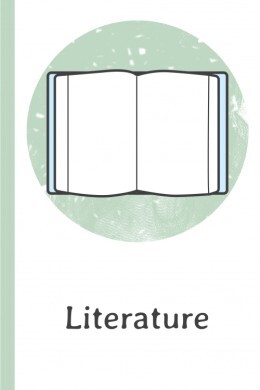the process by which a fictional character is portrayed and transformed throughout a story

캐릭터 개발, 캐릭터 진화
the distinctive way a character's personality, beliefs, attitudes, and emotions are revealed through speech or thoughts

목소리, 어조
villainous character who strongly opposes another person or thing

적대자, 악당
the main character in a movie, book, etc. who lacks heroic qualities such as being morally good

안티히어로, 영웅적인 자질이 결여된 주인공
the events that have happened to a character before their story in a book, movie, etc. begins

배경 이야기, 과거 사연
the transformation or development of a fictional character over the course of a story

캐릭터 아크, 캐릭터 발전
a negative trait or quality of a fictional character that leads to their downfall or contributes to their struggles or conflicts throughout the story

하마르티아, 비극적 결함
a negative trait or quality of a fictional character that leads to their downfall or contributes to their struggles or conflicts throughout the story

성격 결함, 성격 약점
the way in which characters in a movie, book, etc. are created and represented by a writer

캐릭터화, 묘사
the main male character in a story, book, movie, etc., often known for his bravery and other great qualities

영웅, 주인공
the psychological struggle that takes place within a character's mind or emotions

내적 갈등, 내면의 투쟁
the person who tells the story in a novel, poem, etc.

내레이터, 화자
a fictional character, especially one who plays a significant role in a story or narrative

인물, 캐릭터
the main character in a movie, novel, TV show, etc.

주인공, 프로타고니스트
the main bad character in a movie, story, play, etc.

악당, 적대자
the attribution of human traits and feelings to objects, animals, or natural phenomena in art and literature

감상적 오류, 인간 특성의 귀속
(of characters in a narrative) to speak directly to the audience or acknowledge that they are part of a fictional work
a character in a work of fiction who is thought to represent the author's personal beliefs, experiences, or opinions

작가의 대변인, 작가를 대표하는 캐릭터
a character in a work of fiction who is used to help the audience understand and relate to the story

관객 대리인, 관객 대표
a narrative technique in which the credibility and truthfulness of the narrator are called into question

믿을 수 없는 화자, 의심스러운 화자
a narrative technique in which the narrator is all-knowing and has access to the thoughts, feelings, and perspectives of all the characters in the story

전지적 작가, 전지적 서술자
a fictional character, often portrayed as an angelic being, who represents a character's conscience or moral compass

수호천사, 천사 같은 양심
a fictional character, often portrayed as an unethical being, who represents a character's inner voice of temptation

어깨 악마, 나쁜 천사
the perspective from which the narrator tells a story
a person or an animal represented in a book, play, movie, etc.

캐릭터, 주인공
a detailed explanation or description that clarifies the meaning or intent of a written work or discourse

설명
a sudden or significant decline in a character's status, power, or fortune

추락, 쇠퇴
the act or moment of disclosing previously hidden or unknown information to an audience

공개, 폭로
an event or situation that creates a problem or obstacle for the protagonist or other characters in a story

복잡화, 장애물
a feeling of ease or release that occurs after a period of tension, suspense, or stress in a story
a character in a story who undergoes significant internal changes and growth over the course of the narrative

동적인 캐릭터, 성장하는 캐릭터
a character in a story who is not highly developed, and typically has only one or two distinguishing traits or characteristics

평면적인 캐릭터, 일차원적인 캐릭터
a character in a story who contrasts with another character, typically the protagonist, in order to highlight particular qualities of the other character

대조적인 캐릭터, 대비되는 캐릭터
a young, innocent, and naive character, often a young woman, in a story or play

순진한 소녀, 천진난만한 캐릭터
a complex and multidimensional character in a story, who often undergoes significant growth and change throughout the narrative

둥근 캐릭터, 복잡한 캐릭터
a character in a work of fiction who remains the same from the beginning of the story to the end, without undergoing significant personal development or change

정적 캐릭터, 변하지 않는 캐릭터
a stereotype or cliché character that is easily recognizable and often used in literature or other forms of media

스테레오타입 캐릭터, 클리셰 캐릭터
a point of view in which the story is told from the perspective of a character using "I" or "we"

1인칭 서술, 일인칭 이야기
a point of view in which the story is told using "you" as the pronoun for the protagonist or narrator, making the reader or audience feel more involved in the story

2인칭 서술, 2인칭 내레이션
a mode of storytelling where the narrator refers to characters using pronouns like "he" and "she" and is not a character in the story

삼인칭 서술, 제3자 시점 이야기
a person who is romantically or emotionally involved with another person, often a central character in a story or narrative

연애 대상, 로맨틱한 관심사
a close companion or assistant to the protagonist of a work of fiction, who provides support, advice, or comic relief

조력자, 동반자
a character who plays the role of a father, mentor, protector, or guide to a younger character

아버지 같은 존재, 아버지 모델
a character, usually female, who functions as a nurturing or guiding influence over the other characters, often acting in a maternal role

어머니 같은 존재, 모성적인 모델
a person in whom one places trust and shares secrets or private thoughts and feelings

친구, 믿을 수 있는 사람
the second most important character after the protagonist, and often plays a key role in the story's development

듀테라고니스트, 두 번째 주요 인물
a character who appears in a supporting role and has minimal impact on the story

3차 캐릭터, 엑스트라
a character in literature who represents an idea or a concept beyond their literal meaning and functions as a symbol to convey deeper meanings and themes

상징적인 캐릭터
the main female character in a story, book, film, etc., typically known for great qualities

여주인공, 여성 주인공
a wise and insightful figure who offers guidance, advice, or philosophical reflection, often in stories or real life

현자, 성인
a performer or entertainer in a royal court or other setting who is known for their humorous or nonsensical performances

어릿광대, 바보
a literary or dramatic character representing the ordinary individual, often placed in extraordinary circumstances and often used to evoke empathy in the audience

평범한 사람, 보통 사람
a fictional character archetype who, despite engaging in criminal activities, is sophisticated, charming, and often possesses a strong moral code that sets them apart from other criminals

신사 도둑, 백색 장갑 도둑
a type of character archetype often used in storytelling, representing a wholesome and relatable male love interest who typically has a close connection to the protagonist

옆집 소년, 매력적인 이웃
a character archetype that is often described as wholesome, down-to-earth, and relatable

옆집 소녀, 이웃
a stock character often depicted as a sinister figure in literature and folklore who is usually the enemy of the hero

흑기사, 어둠의 기사
| 문학 |
|---|
